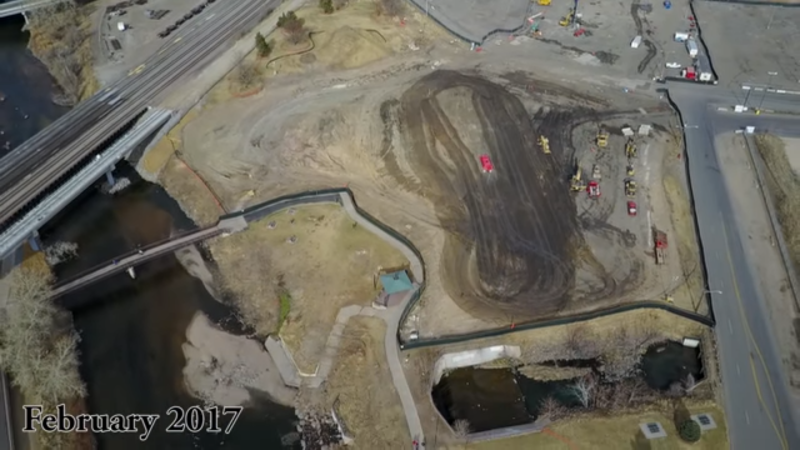Reinforcements Are Coming in the Grassroots Fight Against I-70 Expansion

The Center for Health, Environment, and Justice has joined the Elyria Swansea Neighborhood Association in the fight against a wider I-70, granting $5,000 to the cause.
CHEJ is based in Falls Church, Virginia, but has national reach. Environmental health activist Lois Marie Gibbs founded the organization after a successful campaign to get New York state to clean up the Love Canal site in the 1970s. The state had insisted for years that an industrial dumping ground in Niagara Falls had nothing to do with elevated rates of childhood illness and birth defects. Gibbs led the fight to protect people from pollutants at Love Canal and became known as the “Mother of Superfund,” the federal program for remediating toxic sites.
The new grant won’t fund litigation against the I-70 project — though legal action is still likely — but will rather amplify the message of Denverites already fighting the project.
“Local residents are the most qualified environmental police CHEJ knows,” Gibbs said in a statement.
The Colorado Department of Transportation’s plan to push more cars through the mostly Latino, low-income neighborhoods of Globeville, Elyria, and Swansea, requires digging a 40-foot ditch. To protect that ditch from flooding, the Hancock administration and Denver City Council made a deal with CDOT: They put Denver taxpayers on the hook for widening I-70 in exchange for flood protection work.
Nearby residents are concerned about the environmental implications of both projects. In addition to the traffic and pollution that come from widening a highway, there’s toxic soil — rife with lead and arsenic — at the site of the outfall project, which is part of a federal Superfund site [PDF]. All this in the most polluted populated area in the United States.
“We just don’t have faith that CDOT, the city, or the [Environmental Protection Agency] has followed required procedures, or that they’ll follow the rules in the future,” ESNA President Drew Dutcher told Streetsblog.
Feeding that distrust, Dutcher said, is the fact that CDOT decided against a prior version of the I-70 ditch because of “unacceptable effects on aquatic and ecological resources and increased potential for encountering contaminated groundwater or soils,” according to a 2008 environmental impact statement (page 3-17). He wants to know what’s changed.
The city is trying to “control the public image” of the projects, Dutcher said, and the grant will counteract that by boosting the research and outreach efforts of north Denver residents.
“We really feel that we’re being spoon-fed information by the city and EPA, and we need resources to just look at all the work that’s being done, how it’s being monitored, what are the possible hazards,” Dutcher said. “So it’s really just kind of a citizen-led effort to understand everything that’s going on.”


